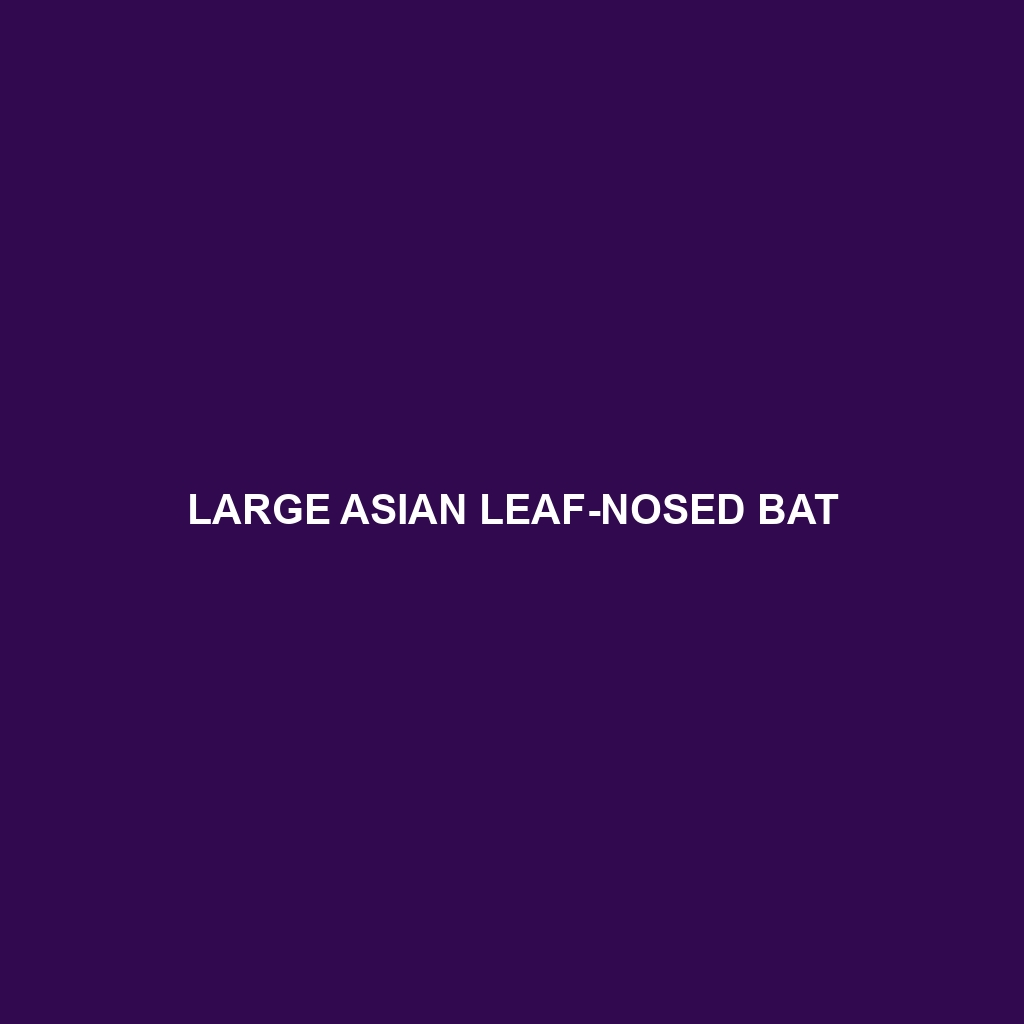Large Asian Leaf-nosed Bat
Common Name: Large Asian Leaf-nosed Bat
Scientific Name: Hipposideros armiger
Habitat: The Large Asian Leaf-nosed Bat is primarily found in Southeast Asia, inhabiting a range of environments including tropical rainforests, limestone caves, and mountainous regions. These bats are commonly spotted in countries such as Thailand, Vietnam, Laos, Myanmar, and parts of southern China. They prefer areas that provide ample roosting sites and a humid climate, which are essential for their survival and reproductive success.
Physical Characteristics: The Large Asian Leaf-nosed Bat offers a remarkable appearance with a wingspan that can reach up to 1 meter (3.3 feet). This bat is characterized by its large, leaf-shaped nose leaf, which helps in echolocation. The fur is generally dark brown to reddish-brown with a lighter underside, providing effective camouflage against predators. Its ears are also large and rounded, adding to its distinctive profile.
Behavior: Large Asian Leaf-nosed Bats are known for their unique social structures; they often roost in large colonies that can number in the thousands. They exhibit nocturnal behavior, becoming active at dusk to hunt for insects. Their echolocation abilities are sophisticated, allowing them to navigate through dense vegetation and hunt effectively in total darkness. These bats also engage in social grooming and have complex communication methods.
Diet: The diet of the Large Asian Leaf-nosed Bat mainly consists of insects, including moths and beetles. They utilize their echolocation to detect and capture prey mid-flight. Their feeding habits are vital for controlling insect populations in their habitats, thus playing a significant role in the ecological balance.
Reproduction: The reproductive habits of the Large Asian Leaf-nosed Bat are typically seasonal, with mating occurring during the dry months. Females give birth to a single pup after a gestation period of about 100 days. The young bats are nursed for several weeks before they are capable of foraging independently. Parental care is crucial, as pups learn essential survival skills from their mothers.
Conservation Status: The Large Asian Leaf-nosed Bat is currently classified as “Near Threatened” by the IUCN Red List. Various factors contribute to this status, including habitat destruction due to deforestation and human encroachment. Conservation efforts are important to protect their natural habitats and mitigate threats to their populations.
Interesting Facts: One fascinating aspect of the Large Asian Leaf-nosed Bat is its unique communication system. These bats produce a range of vocalizations that convey different messages distress calls, mating calls, and social sounds. Additionally, their impressive echolocation skills not only assist in hunting but also help them navigate complex cave systems.
Role in Ecosystem: The Large Asian Leaf-nosed Bat plays a vital role in its ecosystem as an insectivorous species. By controlling insect populations, they contribute to the overall health of their habitats. Furthermore, their guano is an essential nutrient source for various plants and animals, promoting soil fertility. This interaction underscores the importance of bats in maintaining ecological balance and biodiversity.
